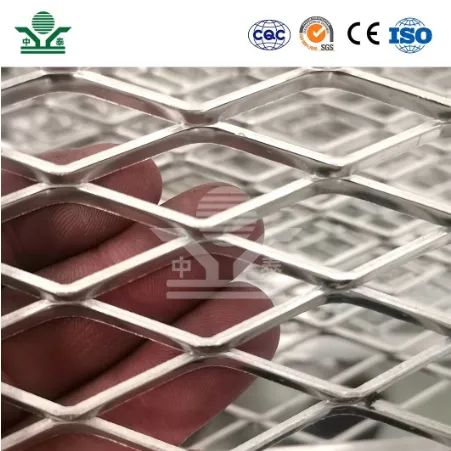Specification for Stainless Steel Grating
Stainless steel grating has become an essential material in various industrial and architectural applications due to its durability, strength, and resistance to corrosion. The specifications for stainless steel grating can vary depending on the usage, but certain standards and guidelines typically govern the manufacturing and performance characteristics of this essential material. This article will delve into some critical aspects of stainless steel grating specifications, ensuring that users select the right type for their project requirements.
Material Composition
The most common grades of stainless steel used for grating are Type 304 and Type 316. Type 304 stainless steel is known for its excellent corrosion resistance and is suitable for most indoor environments. However, in settings that involve exposure to harsh chemicals or marine environments, Type 316 is preferable due to its enhanced corrosion resistance, primarily attributed to the addition of molybdenum. Users should consider the specific environment where the grating will be installed to choose the appropriate grade of stainless steel.
Dimensions and Load Rating
The specifications for stainless steel grating typically include various dimensions and load ratings. Standard widths for grating panels generally range from 12 inches to 48 inches, while the lengths may vary based on project needs, often available in custom sizes. The thickness of the grating bars plays a significant role in determining load capacity. Common thicknesses include 1/4 inch, 3/8 inch, and 1/2 inch.
Load ratings of stainless steel grating are categorized based on their applications, which include pedestrian traffic, vehicular traffic, and heavy industrial use. The load classifications may vary based on the spacing of the bearing bars and their thickness. A common method for determining the appropriate load rating is through the American National Standards Institute (ANSI) specifications, which provide guidelines for expected loads and safety factors.
Open Area and Weight
stainless steel grating specification

The open area of stainless steel grating is a vital specification, especially in applications where drainage or airflow is essential. The open area percentage typically ranges from 50% to 80%, depending on the design and spacing of the bars. A higher open area percentage allows for better drainage and ventilation, making it suitable for areas prone to water accumulation.
Additionally, the weight of the grating is an important consideration, especially for projects requiring transportation and installation. Heavy-duty grating may weigh considerably more, necessitating more robust support systems. When selecting grating, users should evaluate the structural requirements of their application to ensure adequate support can accommodate the chosen product's weight.
Surface Treatments and Finishes
Stainless steel grating can come with various surface treatments that enhance its performance characteristics. Common finishes include plain, galvanized, and polished surfaces. A galvanized finish can provide an additional layer of protection against corrosion, particularly in outdoor or industrial environments. Polished surfaces not only add aesthetic value but also facilitate easier cleaning and maintenance. Depending on the specific application, users must decide on the most suitable surface finish.
Standards and Certifications
Adherence to established standards and certifications is paramount when choosing stainless steel grating. The American National Standards Institute (ANSI), American Society for Testing and Materials (ASTM), and other international standards organizations provide guidelines that ensure the grating products meet safety and quality expectations. It's important for manufacturers and suppliers to comply with these standards, as this guarantees that the grating can withstand the anticipated loads and environmental stresses over time.
Conclusion
In summary, stainless steel grating is a versatile and durable solution for numerous applications. When selecting the appropriate grating, attention must be given to the material composition, dimensions, load ratings, open area, surface treatments, and compliance with industry standards. By understanding these specifications and selecting the right type of stainless steel grating, users can ensure they make a well-informed decision that meets their project's specific needs while providing long-lasting performance.
-
Why Galvanized Trench Cover Steel Grating Resists Corrosion
NewsJul.10,2025
-
The Versatility and Strength of Stainless Expanded Metal Mesh
NewsJul.10,2025
-
Load Calculations in Steel Grating Platforms
NewsJul.10,2025
-
Keeping Pets and Kids Safe with Chicken Wire Deck Railing
NewsJul.10,2025
-
Hole Diameter and Pitch for Round Perforated Metal Sheets
NewsJul.10,2025
-
Aluminium Diamond Mesh in Modern Architecture
NewsJul.10,2025
Subscribe now!
Stay up to date with the latest on Fry Steeland industry news.

